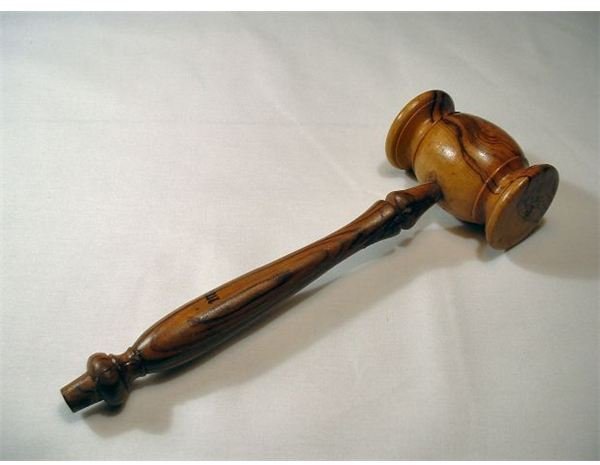Is Business Bankruptcy Chapter 11 Right for You?
Don’t Fear Chapter 11 Restructuring
Look up business bankruptcy and you’ll find some scary stuff out there. You will read things on business bankruptcy Chapter 11 restructures like how you’ll have to lay-off employees or your business will close even if you choose Chapter 11. Most websites will warn you to find other ways to keep your business alive.
Unfortunately, for some business owners, things like lost lawsuits that can range in the hundreds of thousands of dollars or inadequate buy/sell agreements that can’t be met as well as other financial issues may force the entrepreneur to consider Chapter 11.
If this is your company, don’t believe everything you read about bankruptcy and Chapter 11—find out how it really works here.
Screenshot by author courtesy of US Courts.
The Chapter 11 Process

If you are considering business bankruptcy Chapter 11 to restructure your business and keep your doors open, here’s how the process flows:
- Choose the Right Attorney – I don’t recommend picking a bankruptcy lawyer from the Internet. Instead, call your state’s Bar Association and ask for a list of those that practice business bankruptcy law and call some of them to inquire. No matter what law firm you choose, a typical small business bankruptcy restructure (revenues under $2 million) will take approximately 2 years in legal and court fees and when paid in full, will cost you around $50,000 to $75,000—but don’t let that number scare you.
- Federal Bankruptcy Court – If you pick the right attorney, they will choose to file in Federal Bankruptcy court and not a state court. Why? The Federal Bankruptcy court offers better protection from creditors and others who you may owe such as lost lawsuits, etc. Your attorney will file for an immediate intent to restructure and then it’s on to the paperwork.
- The Paperwork – This also isn’t as scary as it sounds. In a Chapter 11 restructure, if filed in Federal Bankruptcy court, the court will offer up a packet you will need to complete. This paperwork does require you to gather some items such as 3 years of tax returns and financial statements, a current profit and loss statement and a list of every vendor you made a payment to 8 months prior to the initial intent to file. This vendor payment list is needed as every vendor will be sent a notice of the restructure. You will also need to include any loans due, assets, liabilities, lawsuit information and other large amounts of money you may owe like back 941 Employee taxes or sales taxes. You will also need to provide information on rent or mortgages and employee information. No personal information, not even the social security numbers of the business owners is required.
- Cash Collateral Budget – This document is prepared by you (the business owner) and your attorney. It will be offered to the Federal Bankruptcy court with the paperwork packet you and your attorney prepare. A cash collateral budget lists a six-week period of expected revenues and expenses. This is a simple form and it even includes all payroll expenses and operating expenses—it doesn’t include prior obligations—that’s what you will be protected from during the restructure. The Federal Bankruptcy court will accept your attorney’s recommendation that your budget is indeed accurate and it can be changed to reflect revenues and expenses as needed. Actually your cash collateral budget is exactly the same as a cash flow proforma.
- Current Obligations – Once the cash collateral budget is filed, you only pay current obligations—no payments are made on past due accounts of any kind—even mortgages or loans. For example, if you owed back rent of $5,000, that $5,000 isn’t considered in the cash collateral budget, only your current rent for each month is considered and allowed to be paid. Even legal fees to your attorney are included in the cash collateral budget so if you forecast correctly, the legal and court fees can be easily paid during the restructure.
Image Credit (MorgueFile)
Please continue on to Page 2 for more on the process of business bankruptcy Chapter 11 restructure.
More on the Chapter 11 Process

On page one of this business bankruptcy Chapter 11 restructure guide, some steps were presented including choosing an attorney, filing the motion, gathering some paperwork and preparing a cash collateral budget. Once that is done, here is how your business will operate during the Chapter 11 restructure.
- DIP Account – A debtor in possession bank account or DIP account must be opened by a bank that is authorized to do so—this will be the only bank account you will use for both payroll and operating expenses. Your attorney can tell you which banks in your area are authorized to open a DIP account. If your attorney files in Federal Bankruptcy court, most likely you will be named the debtor in possession so you don’t have to worry about a trustee coming in and running your business during the restructure.
- Expenses – All day to day operating expenses and overhead including payroll are paid based on what you submitted on the cash collateral budget. So, those rumors that you will have to fire employees are simply untrue. If you included all employee expenses, including benefit expenses, all of them can be paid during the restructure—and at the same salary levels—even officer salaries.
- Reporting – During the restructure, each month you will be asked to submit financials (profits and losses) to the court and simple reports printed from your accounting software system are acceptable.
- Court Fees – Based on the amount you are claiming in your business bankruptcy Chapter 11, the Federal Bankruptcy court charges quarterly fees based on that amount. Most small businesses pay quarterly fees of $100 to $500. These fees can’t be paid late or the court could dismiss your protection under Chapter 11.
- Old Accounts – While you are under the protection of Chapter 11, those mortgages, loans and other large ticket items can still be paid—but only current monthly amounts. Past due or old accounts are not paid. You and your attorney, however, can choose to pay off some small vendor accounts but mostly, it’s recommended the old accounts wait to receive payment during the restructure.
- Write-Offs – Most businesses do choose Chapter 11 not because of day to day expenses but because of large obligations that have become impossible to pay such as lost lawsuits or legal contracts where the company may owe but disagree with. Your attorney will push the Federal Bankruptcy court to either have these written down, written off, or ask the creditor to settle for a reduced amount on a payment schedule on the past due amounts that will begin once the restructure process is complete—not during the restructure.
Image Credit (MorgueFile)
Why Consider Chapter 11?

By now, some of you may be saying if the business continues to operate and pay its current obligations and may have to pay back creditor amounts, what’s the point of filing? During a Chapter 11 restructure, no creditor, even the IRS or state agencies are allowed to lien any part of your business for debts owned. In addition, because you are working with a cash collateral budget, most likely the restructure process will give you a chance to build on revenues and cover expenses with money left over at the end of each month.
If you do have money left over at the end of each month, while you can’t use it for large purchases, you don’t have to use it to pay off past due creditors either—that’s the purpose of a restructure—to help you gain a better financial position with need capital dollars and financial equity.
In the end, as long as you have stayed current on court fees, paid only current expenses, and kept your monthly reporting up-to-date, your attorney will have either settled with past due creditors, including lost lawsuits or contractural agreements you disagree with or amounts you owe will be drastically reduced and placed in a fair payment plan set by the court that will enable you to use your new financial equity in a fair manner—not making your broke again.
If you think business bankruptcy Chapter 11 restructuring is right for you, don’t be ashamed of the process—it could very well save your business and your reputation. It is no different than big businesses such as Chrysler or GM when they filed for restructure protection and often, if your past due debts are impossible to pay, but not enormous, you may be out of the restructure quickly—even less than a year.
Your most important step is finding the right law firm to represent you during the Chapter 11 restructure so make sure your research firms with your local Bar Association.
Image Credit (MorgueFile)
